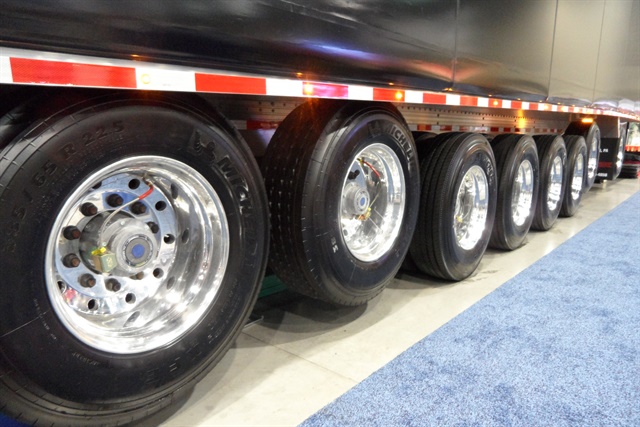Phase 2 GHG Regs for Trailers Both Simple and Complex
Flatbeds, among the vocational trailers newly regulated for fuel economy and emissions by the federal Phase 2 rules, will need tire pressure management devices and low rolling-resistance tires to comply. Photo: Tom Berg
“>
Flatbeds, among the vocational trailers newly regulated for fuel economy and emissions by the federal Phase 2 rules, will need tire pressure management devices and low rolling-resistance tires to comply. Photo: Tom Berg
“>
Last week the feds released their final rules for Phase 2 heavy-duty vehicle fuel-efficiency and greenhouse gas standards, which go into effect in 2018 and run through 2027. There’s much to digest from the 1,700-page document, and we’re getting help from truck and trailer builders and interested organizations and are publishing stories elsewhere on TruckingInfo.com.
Trailers, the subject of this weekly blog, have long been regulated for safety. But trailers’ contributions to fuel economy and reduced emissions are new matters for the federal Environmental Protection Agency and the National Highway Traffic Safety Administration, the agencies that jointly researched and wrote the rules. That caught the attention of the International Council on Clean Transportation, a “green” think tank based in San Francisco.
“By far the most significant new addition into the regulation are the trailers hauled by heavy-duty tractor trucks,” wrote Ben Sharpe, a principal researcher at ICCT, in a blog. “Trailers were not included in the [current] Phase 1 rule, and their inclusion in Phase 2 helped to squeeze an extra half a mile per gallon out of tractor-trailers.
“Ok, so what?” he continues. “Well, for the vehicles affected by the regulation, adding an extra 0.5 mpg across the entire tractor-trailer fleet in the U.S. translates to a reduction of about 7 billion gallons of diesel and 100 million metric tons of CO2. That’s roughly the same as taking all of the passenger cars and trucks in California off the road for an entire year! So including trailers in Phase 2 is indeed a big deal.”
What trailer types are affected? As suggested in last year’s Phase 2 proposals, they’re mainly box-type …Read the rest of this story
